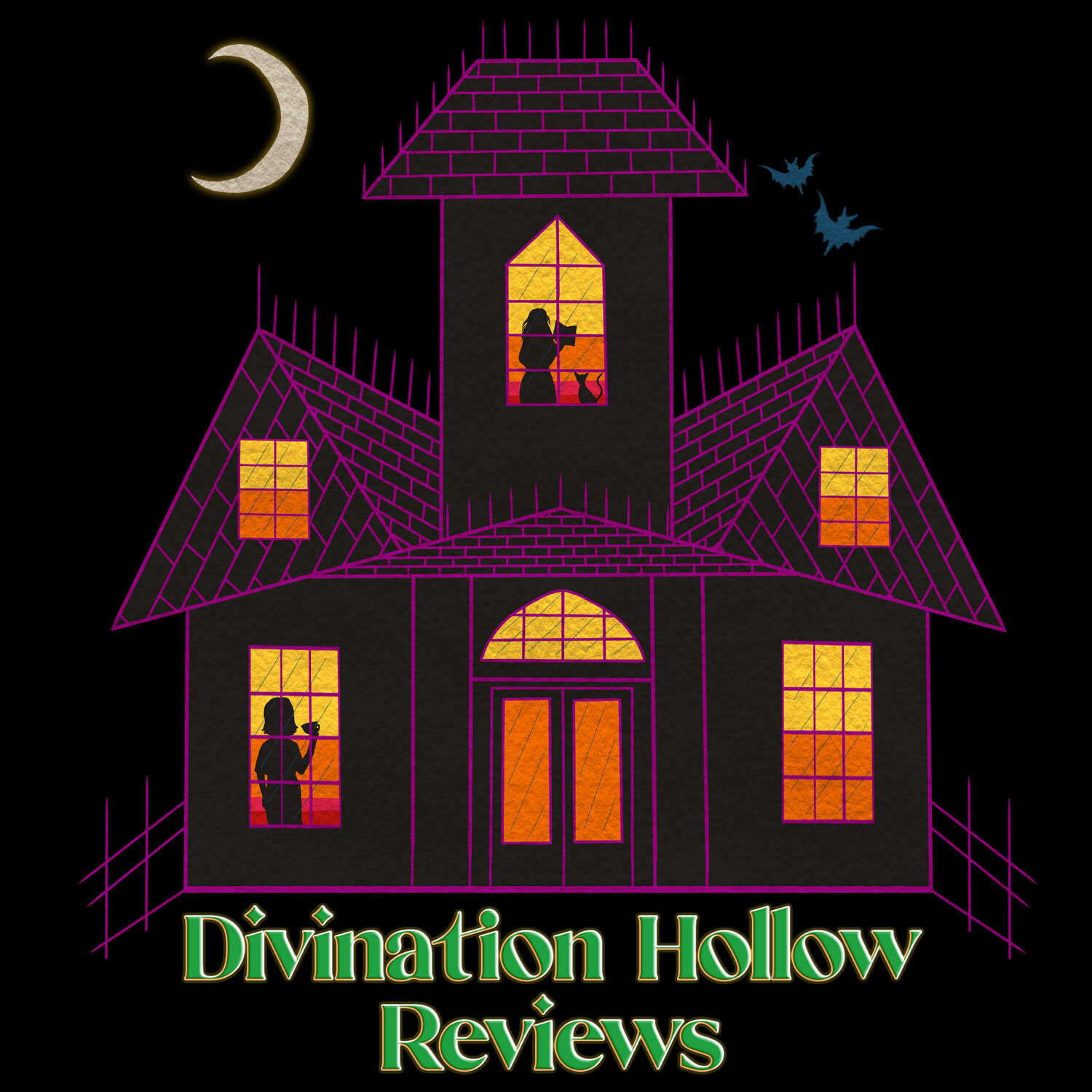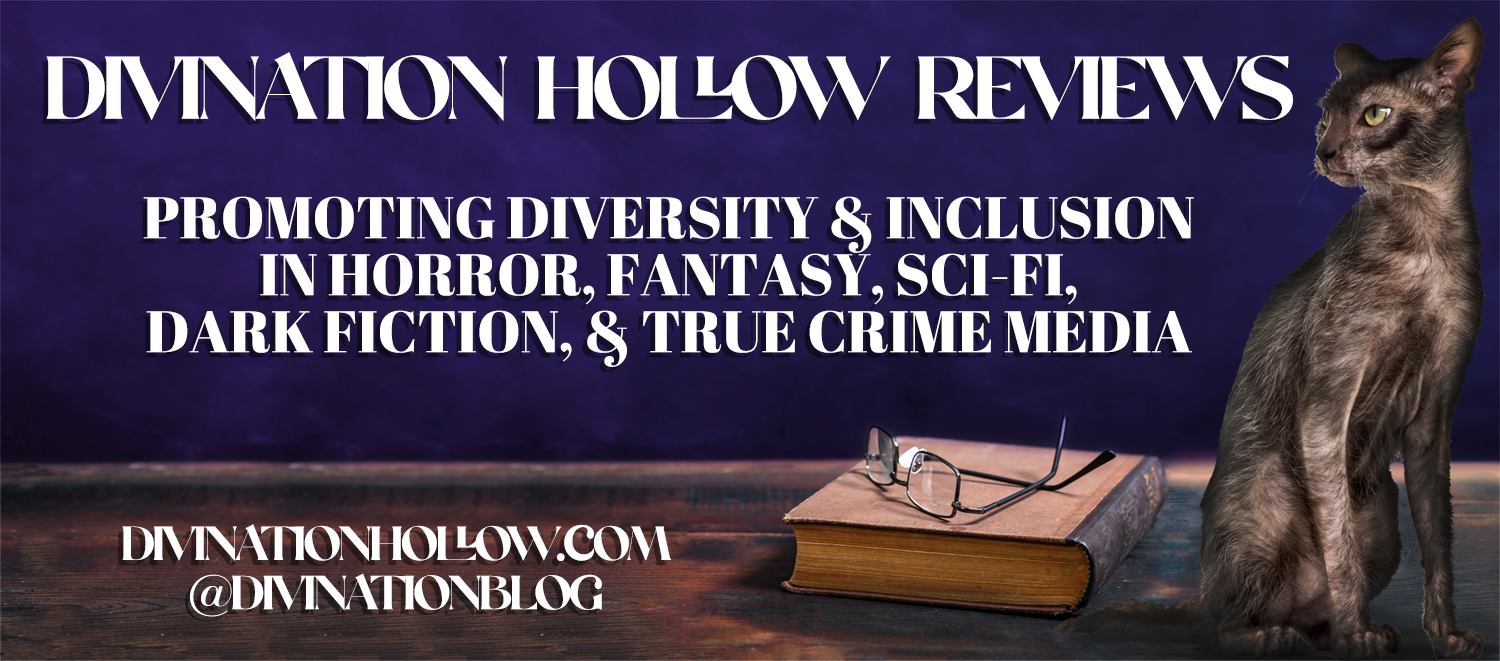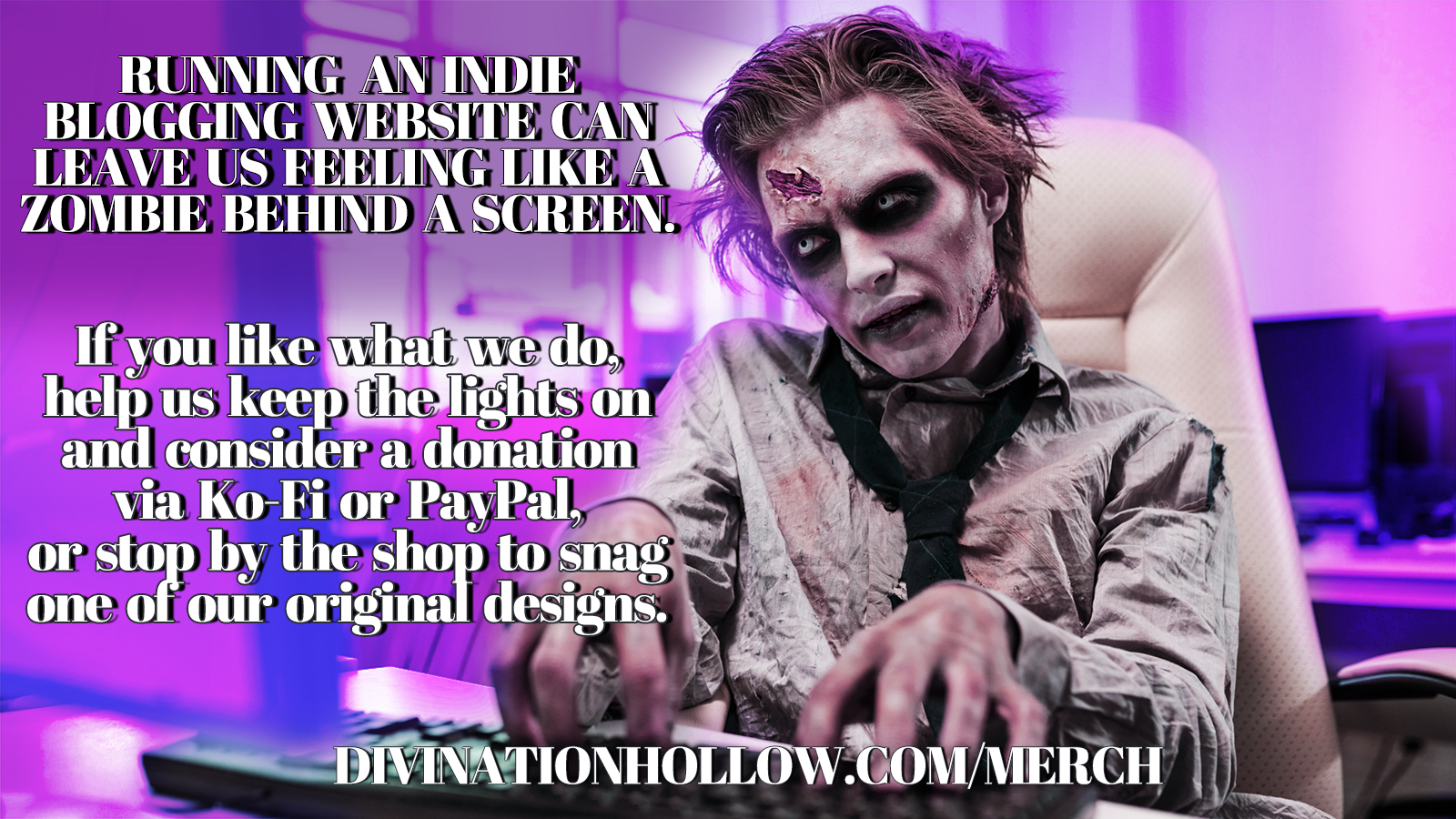First Kill Deserved More
Content Note: This does contain some spoilers, so if you haven’t seen the show yet - go watch it first!
‘First Kill’ Deserved More
While partway through writing this, the announcement was made that, unfortunately, First Kill would not be returning for a second season. This is addressed later on.
Imagine, if you will, a small, sleepy town that matches the ideal of American suburbia (And yes, feel free to read in Rod Serling’s voice). The type of town that maybe has a past, but has done its best to move on from it. Nowadays it’s peaceful, and idyllic. Some may even say quaint, especially with its regular festivals, large, grassy town square, local coffeeshop and single high school, and the guarantee of running into someone you know almost every single day.
But the day we arrive, there’s a fog, obscuring parts of the town. Maybe something has just arrived, or maybe something has been here the whole time, lurking just beneath the surface. Something that’s…hungry.
(Insert Twilight Zone theme)
Where are we? you might ask. What possible part of America could we be in?
It’s probably Maine. Or, at least, somewhere that’s…distinctively midwestern, because it has to have proper autumn – sorry, fall – weather.
And that thing, that’s either arriving in the town with some hidden past link to it, or that thing that’s been here the whole time, it’s vampires. It’s always vampires. Let’s just get that out of the way now. Maybe there’s werewolves, too, or some other type of paranormal creature, but mostly…we’ve got vampires.
Welcome, friends, to the teen paranormal drama.
These tropes aren’t limited to the teen demographic, of course, but the adult versions of these shows tend to broaden the scope more, giving us settings that reach beyond “Small Town America”. But Buffy, Vampire Diaries, Legacies and even Sabrina the Teenage Witch (even if that one doesn’t have the vampires) keep their storylines and plots firmly focused in the towns where they’re set. Once you look at the more ‘adult’ versions, you have larger settings, which makes sense – the first group have teens as their main characters, and for the most part the town they grow up in is a teen’s whole life. Once we switch to the adult shows, you might still find some of those small towns (True Blood) but you have more movement between, say, Sookie’s house and the nearby city. You also have cities themselves as the settings (New Orleans for The Originals) or colleges for a more New Adult flavour (The Order), or even seemingly the whole of Europe but mostly England and France in A Discovery of Witches.
Some of these shows are adapted from other material, but adapting it to fit with a different audience. Large parts of Vampire Diaries and True Blood were changed for TV, True Blood in particular stripping the story of some of the wilder turns later books took. But no matter their flavour, whether they’re vampires or werewolves and witches (again, The Order) even where these shows have LGBT+ characters, the focus romance tends to be between broody male vampire and dainty, vulnerable human girl – or seemingly human girl who is then revealed to not be so human after all.
Here's the thing, and I don’t think I’m anywhere near alone in this – I freaking love these shows. I love getting swept up in the stories and characters. I have particular affection for Originals, which became a comfort show for me when I really needed one and led into me finally watching The Vampire Diaries. True Blood I was hooked onto right until the end, and I have literally just finished finally watching A Discovery of Witches. Yes, they can be cheesy, and predictable, with rocky, low-budget(ish) CGI. But none of these things really matter. Or, maybe they do, a little, in the sense that it’s just part of the genre’s charm.
It's hard not to notice, especially in some of the older shows, the lack of LGBT+ characters. Or if they’re there, they’re not treated greatly. There were three characters who had any decent screentime in A Discovery of Witches who were LGBT+ (spoilers ahead) – MC Diana’s aunts, Sarah and Em, and a vampire Fernando. These were all recurring characters, with Fernando coming in later, but the only member of the overall core group of recurring characters who dies is Em, and Fernando is pining over his partner, Hugh, who, yep, is dead. Fifty per cent of the queer characters are dead by the time we’re even introduced to Fernando. I am yet to read the books, but if this is how it goes in the narrative, what the hell?
Some of those other shows have queer characters, but very rarely are they at the forefront, and in older shows their queerness is hidden between the lines, with long looks and missed chances. It’s rare we see the human (at the start) woman and vampire man romance subverted, and when we do it’s often to make the woman more ‘on par’ with her paranormal lover, to make her more special and unique.
Again, I enjoy these shows, but once you dig in, the flaws become numerous – the main couple are het and white, while marginalised characters are often killed off or generally treated poorly, as a side-line to our own special MC. I am focusing on LGBT+ themes here, and as always urge you to seek out responses from others in regards to the treatment of other characters, but it’s not hard to miss when characters like Bonnie in The Vampire Diaries or Em in A Discovery of Witches or Tara in True Blood are mistreated and often used only to propel the MC’s storyline forward.
These are not TV shows always mean to be taken completely seriously. They don’t strive for extremely high-quality CGI, and they give viewers classic romance formulas stretched over seasons. You know when the show leans more towards Paranormal Romance the MC, at least, is going to end up happily ever after, even if her love interest doesn’t, or no matter how many family and loved ones they lose along the way. Not to say endings are always satisfying, but they usually conclude with the MC forging ahead on her path, with or without her lover.
The one that stands out among these is Originals, which tilts away from Paranormal Romance to focus on Klaus and his family. There are prominent LGBT+ characters, especially with the introduction of Faye, and the cast is more racially diverse than other shows – it’s not perfect, however, and again I cannot comment on the treatment of Black characters throughout it, but there’s a wider story beyond any romance Klaus experiences.
But Originals is a show targeted at Adults, leaving a fair gap in YA focused properties.
It’s fair to say that no TV show or film is ever going to be perfect, and will have areas where it falls down. We should be conscious of what we’re watching, and always able to criticize the handling – or mishandling – of marginalised characters, especially if they slide into stereotypes. But we can also acknowledge what the advent of these shows can mean.
First Kill, like many of the previous shows mentioned, is an adaptation. But whereas the others had whole series of books to build storylines from, First Kill had one short story. There was some clumsy handling of the allegory of monsters, and criticism levied at the show’s portrayal of pasty white pale aristocratic vampires going up against a family of Black vampire hunters. But in terms of LGBT+ content, the show was not afraid to show two young girls not just in love, but in lust, barely able to resist each other, dealing with their emotions while also navigating the crazy, hormonal world of being a teenager and, of course, one is a vampire, one is a vampire hunter.
It's immediately a different dynamic than what we normally see. How many of the previously mentioned shows start with the vampire LC stalking the woman? Or have it revealed that he’s been watching her for a long time. Of course, the girl has to be special, because otherwise why would a hundreds of years old bloke want to be with a sixteen-year-old…do you get how that sounds? But that conversation has been done, so let’s focus back on First Kill.
Not only are these two the same age, they have, essentially, the same standing in their respective families, and both absolutely capable of deeply, physically hurting the other. They are on more of an equal footing from the get-go than Elena and Stefan/Damon, Sookie and Bill/Eric, or Diana and Matthew, no matter what is revealed about Elena/Sookie/Diana down the line. Not to say there aren’t social differences between them, but their experiences of the world are on par. A huge difference between Juliette and Stefan, Bill, Matthew etc. Both Juliette and Cal are yet to make their ‘first kills’, and as the youngest of their families, both feel the pressure of having to do so.
It's a drama, and at its core, almost soap opera-like in its handling of characters, dialogue, the issues explored etc. It never gets too ‘heavy’ but tries to keep things more allegorical, but retains the idea of the ‘bad vampire’ who threatens the main couple, though even here there’s a slight twist, too. And unlike the other shows, both Juliette and Cal have parents, which is kind of a rarity in these dramas - Elena is an orphan living with her aunt, Sookie is an orphan raised by her grandmother, and Diana is an orphan raised by her aunts, though the latter two are adults at the start of their shows. The closest comparison probably comes from Originals, though even here the relationship with said parents is strained at best, with father Michael actively hunting down his children.
So, First Kill has as its focus two teenage girls, with different family dynamics, tensions within said families, and supernatural threats as the girls grapple with their feelings towards them and their hormones. It doesn’t shy away from showing Juliette’s and Cal’s passions towards one another, or from the idea of female sexuality. Although it is no surprise Netflix cancelled this show, it is a great disappointment. Not just because the core romance was two women, but because Cal is a dark-skinned Black woman, and we’ve seen all too clearly recently how Netflix treat any so-called ‘minority’ group.
The point is, First Kill isn’t uniquely ‘bad’, not in general and sure as hell not within its own Paranormal Romance/Supernatural Drama show grouping. The fact is, a lot of the negatives with it can be attributed to lack of budget, but those of us who enjoy similar shows, we recognise they usually have below-par CGI, cheesy dialogue, maybe not totally amazing blow away acting, especially in their first season. But they normally get a chance, at least, to stand on their own two feet and draw the watchers back. The amount of First Kill watched apparently dropped off too quickly for Netflix’s liking, but a lot of people were under the impression it was starting and finishing it quickly to gain a second season.
We don’t know what makes Netflix renew something for multiple seasons and what makes them cancel it, but First Kill got barely any time for people to rewatch it, or introduce it to friends, or for it to pick up speed, before it was cancelled. There was a time when shows like this were taken a chance on, but more and more, Netflix’s decisions are looking to be extremely odd (read: bigoted) in the types of shows they cancel and renew. (See also: October Fraction) With a low budget and barely any marketing, First Kill felt like an exercise more than an actual investment, and it’s a shame Netflix decided to axe it so quickly, when previous similar shows have shown these shows take time to pick up a following, but my God will they – we, even - stick with it through some crap!
Whether or not you like these shows, whether or not you watched First Kill, cancelling it, alongside the other behaviours the company has been showing, feels like a huge mistake, and it casts doubts on how much investment they’re willing to put into other properties that feature similar characters, that is to say more diverse characters. First Kill deserved more, Cal and Juliette deserved more, and it’s a shame to see Netflix throw it away so easily.
By Elle Turpitt
Twitter & Instagram: @elleturpitt
Website: elleturpitt.com






